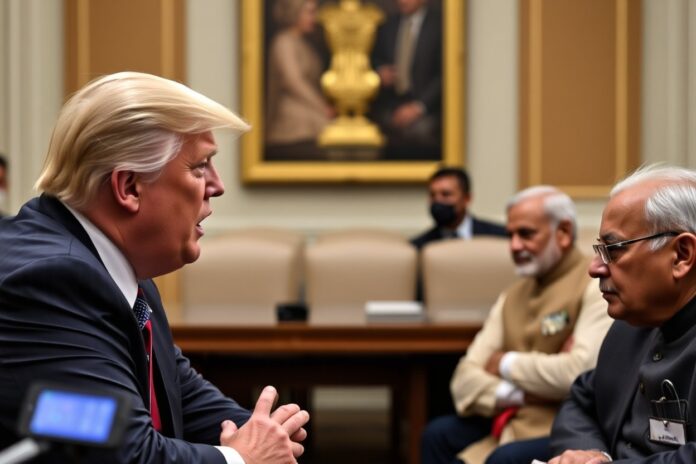U.S. Escalates Tariffs
On August 6–7, 2025, U.S. President Donald Trump announced a new 25% tariff on Indian imports—adding to an earlier 25% levy. This brings the total tariff on many Indian goods to 50%, among the highest imposed by the U.S. on any trading partner.
The penalties target India’s continuing purchases of Russian oil, which Trump has criticized as supporting Moscow’s war machine.
Trump has also signaled potential for broader trade policy escalation—threatening “secondary sanctions” or secondary tariffs on countries (like India or potentially China) that continue trading in Russian energy products. These tariffs could reach up to 100% or even 500% under proposed legislation such as the Sanctioning Russia Act of 2025.
India’s Defiant Response
India’s Ministry of External Affairs swiftly condemned the tariffs as “unfair, unjustified and unreasonable,” defending its energy procurements as vital to the needs of its 1.4 billion citizens.
Indian officials emphasized that many nations—such as EU countries—engage in similar Russian contracts yet have not faced comparable penalties.
India has vowed to take all necessary steps to protect its national interests and has rejected the notion of compliance under external pressure.
Geopolitical Stakes & Strategic Fallout
Once heralded as allies, Trump and Narendra Modi now oversee a deepening rift in bilateral relations. Critics warn the tariffs weaken decades of cooperative progress and risk redefining India’s strategic alignments—amid growing overtures to BRICS, China, and Russia. Trump has also approached Pakistan with diplomatic overtures, further unsettling India’s strategic calculus.
On the legal front, U.S. courts earlier this year invalidated prior Trump-era emergency tariffs under the International Emergency Economic Powers Act (IEEPA), raising questions about the legality of sweeping executive actions. Nevertheless, the administration appears to be leveraging IEEPA again to justify secondary sanctions and steep tariffs.
Economic & Global Consequences
Analysts warn that the combined tariffs could slash India’s exports to the U.S. by 40–50%, especially in sectors like textiles, footwear, jewelry, pharmaceuticals, and automotive parts, significantly hurting GDP growth projections—which could dip below 6%.
Meanwhile, secondary sanctions aimed at major buyers of Russian energy raise the specter of global economic upheaval—projected to fuel inflation, spike energy prices (possibly toward $120/barrel), and disrupt supply chains.
What Lies Ahead
With the new tariff schedule set to take effect 21 days after the August 7 announcement (around September 17, 2025), India has a narrow window to engage in diplomacy, negotiate concessions, or explore alternative energy sources.
Observers anticipate:
Secondary sanctions could expand beyond India, potentially targeting China or EU countries if energy ties with Russia persist.
India doubling down on multilateral platforms and trade diversification.
A legal and diplomatic showdown over the scope of presidential powers under IEEPA.
[Newsroom staff written original, where key claims or facts are used, I’ve referenced the original sources (like Reuters, FT, Economic Times, Al Jazeera, etc.) transparently.]




